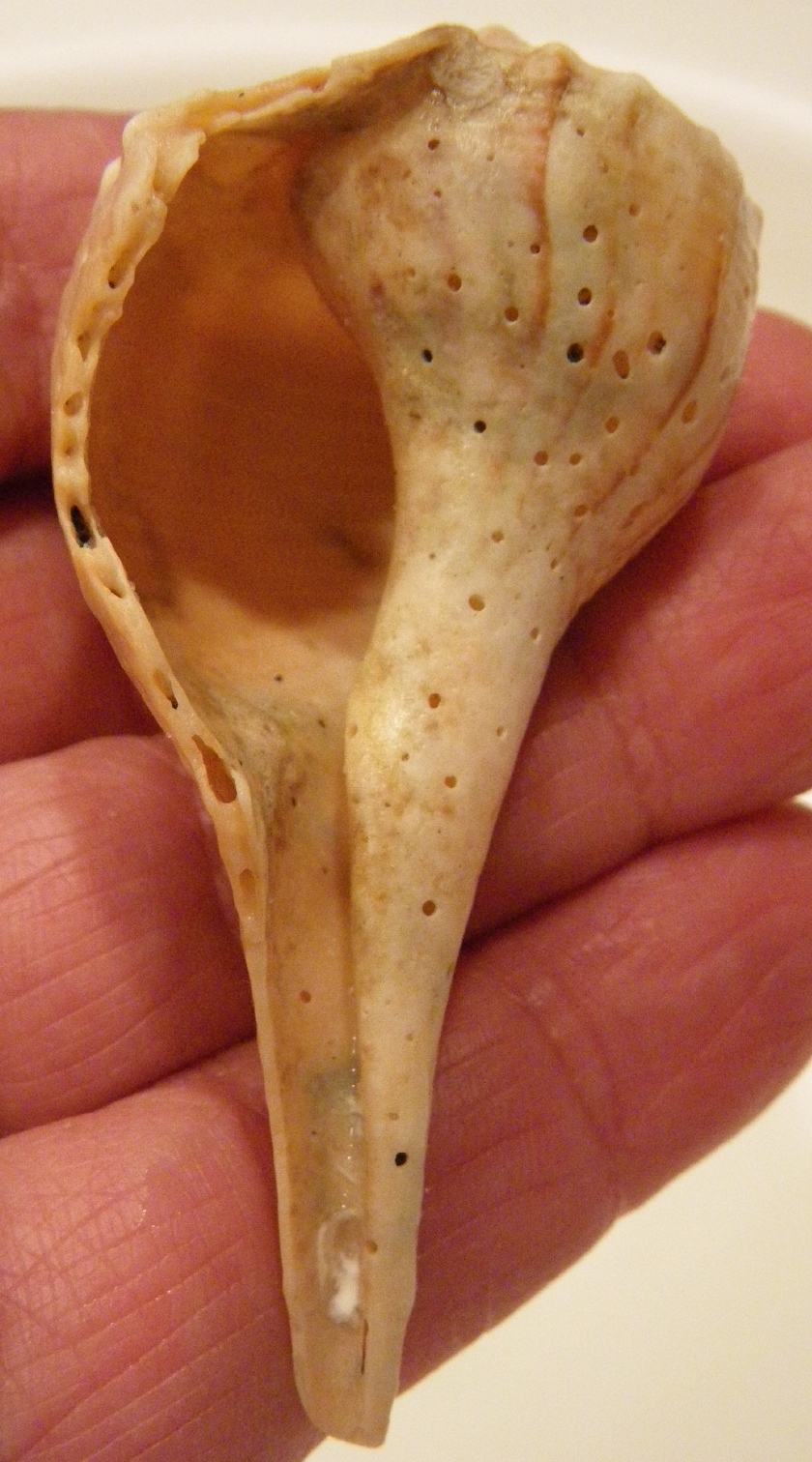Lightning Whelk (Busycon perversum)Â from Vanderbilt Beach
Here comes a southern sinister snail to greet the New Year. Large local whelks, channeled and knobbed, found in the Great White North of Cape Cod are considered right-handed; that is, when the whelk is held with the spire up and the siphonal canal down, the shell exhibits a dextral aperture. For more information about these local northern whelks, see The Large and the Small of It (Whelks).  From Vanderbilt Beach in North Naples, Florida comes a more sinister snail. The lightning whelk, when held in the same orientation as described above, is considered left-handed with a sinistral opening. It surely earns its scientific name “perversum.”
Lightning Whelk (left) and Channeled Whelk (right)
The lightning whelk is a predatory snail that can be found as far north as New Jersey to Florida and the Gulf states in the south. They prefer sandy and muddy bottoms of shallow embayments, but choose deeper waters than knobbed whelks. Lightning whelks are large predators who’s principal prey include bivalves.
Channeled Whelk (left) and Lightning Whelk (right)
Another difference between lightning and channeled & knobbed whelks is that lightning whelks have lower or flatter spires. They are all edible species and have been historically consumed by humans.Â
Lightning Whelk (Busycon perversum)
The lightning whelk is the state shell of Texas.



